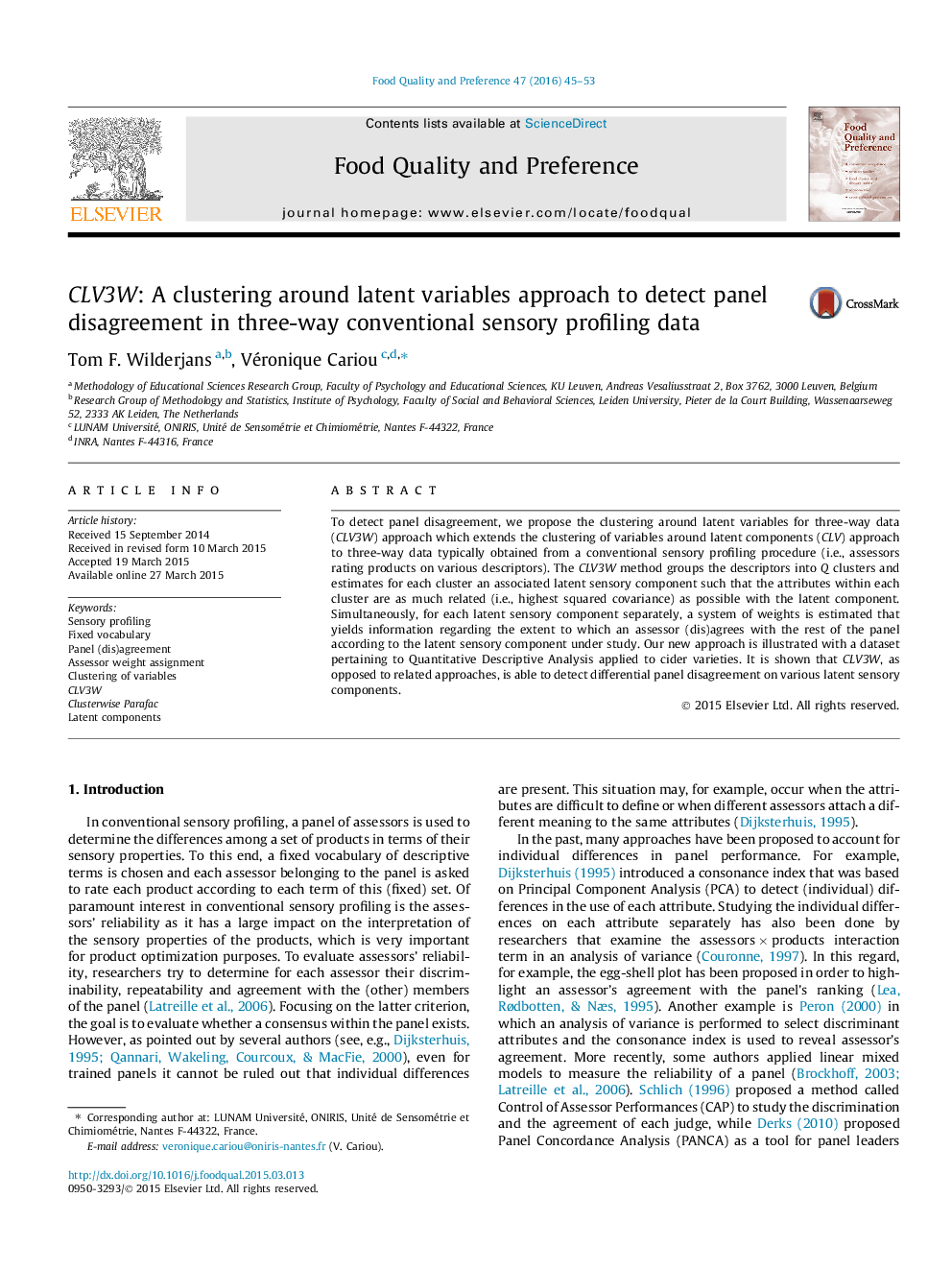| Article ID | Journal | Published Year | Pages | File Type |
|---|---|---|---|---|
| 6261402 | Food Quality and Preference | 2016 | 9 Pages |
â¢In the scope of sensory profiling, the CLV approach is extended to three-way data.â¢CLV3W exhibits clusters of sensory descriptors along with their latent dimensions.â¢A weight is determined for each combination of an assessor and a latent dimension.â¢CLV3W detects poor performing assessors along with the problematic latent dimension.
To detect panel disagreement, we propose the clustering around latent variables for three-way data (CLV3W) approach which extends the clustering of variables around latent components (CLV) approach to three-way data typically obtained from a conventional sensory profiling procedure (i.e., assessors rating products on various descriptors). The CLV3W method groups the descriptors into Q clusters and estimates for each cluster an associated latent sensory component such that the attributes within each cluster are as much related (i.e., highest squared covariance) as possible with the latent component. Simultaneously, for each latent sensory component separately, a system of weights is estimated that yields information regarding the extent to which an assessor (dis)agrees with the rest of the panel according to the latent sensory component under study. Our new approach is illustrated with a dataset pertaining to Quantitative Descriptive Analysis applied to cider varieties. It is shown that CLV3W, as opposed to related approaches, is able to detect differential panel disagreement on various latent sensory components.
